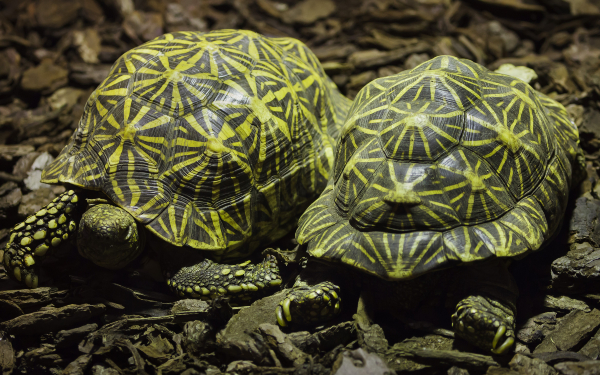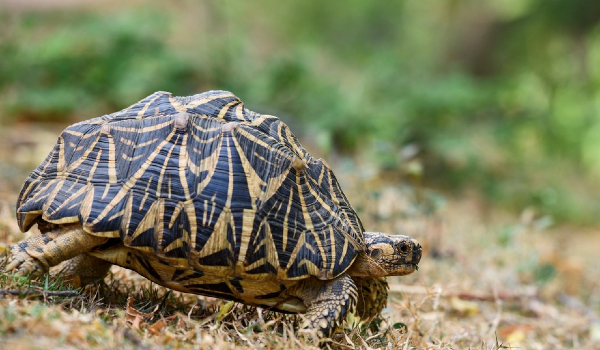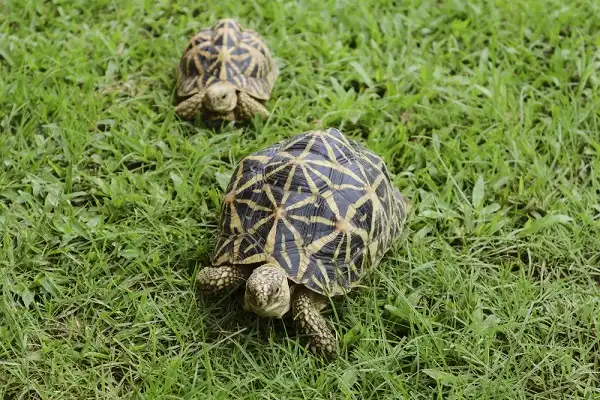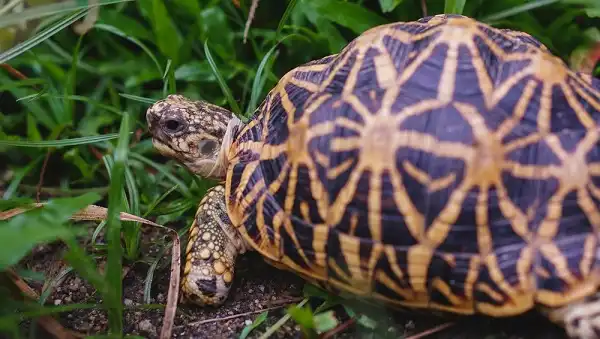The Indian star tortoise (Geochelone elegans) is a species of tortoise found in India and Sri Lanka. They are one of the most popular pet tortoises in the world, and are known for their distinctive star-shaped shell. Indian star tortoises are a relatively easy to care for, making them a popular choice for new reptile owners. In this blog post, we will discuss the care and needs of the Indian star tortoise, as well as provide some tips on how to care for them properly.

Indian Star Tortoise Description
Indian Star Tortoises are small to medium-sized turtles, reaching a maximum length of around 16 inches. They have a high, domed shell which is yellow or tan in color, with a star-shaped pattern of brown or black markings. Indian Star Tortoises are found in a variety of habitats, including dry scrubland, forest edges, and grasslands. They are omnivorous, feeding on a range of plant and animal matter. Indian Star Tortoises are sexually dimorphic, with males being larger than females. They are also long-lived, with a lifespan of around 50 years in the wild. Indian Star Tortoises are popular pets, due to their unique appearance and docile nature.
Indian Star Tortoise Habitat
Indian Star Tortoises are native to dry, arid regions of India and Sri Lanka. They prefer habitats with sandy or loamy soils and access to shallow pools of water. Indian Star Tortoises are often found in scrublands, grasslands, and open woodlands. Due to habitat loss and fragmentation, Indian Star Tortoises are listed as vulnerable on the IUCN Red List. Indian Star Tortoises are also popular pets, which has led to a thriving illegal trade. In order to protect this species, it is important to conserve their natural habitat.
Indian Star Tortoise Diet
Indian Star Tortoises are herbivores and their diet consists mainly of vegetables and grasses. They also require a source of calcium, such as oyster shell or cuttlebone, to maintain strong shells. Indian Star Tortoises should be fed a variety of fresh vegetables and greens daily. Safe vegetables for Indian Star Tortoises include collard greens, mustard greens, turnip greens, dandelion greens, and chicory. Indian Star Tortoises should also be given a small amount of fruit as a treat. Safe fruits for Indian Star Tortoises include apples, bananas, strawberries, and blueberries. Indian Star Tortoises should have access to fresh water at all times. Their diet can be supplemented with commercially available tortoise food pellets or sticks.

Indian Star Tortoise Size
Indian star tortoises are one of the smaller species of tortoise, typically only growing to be about a foot long. However, they can sometimes grow larger, with the biggest ones on record reaching up to two feet in length.
Indian Star Tortoise Lifespan
Indian star tortoises can live for up to 40 years in the wild, and even longer in captivity. With proper care, your Indian star tortoise can provide you with years of enjoyment.
Indian Star Tortoise Behavior
Indian star tortoises are a popular pet due to their docile nature, but they can also be quite lively and active. Indian star tortoises are generally shy when first meeting people, but they will quickly warm up if handled gently and frequently. Indian star tortoises are also known to be very curious, and will often explore their surroundings with great interest. When it comes to food, Indian star tortoises are mostly herbivorous, but they will occasionally eat small insects. Indian star tortoises typically live for around 40 years in captivity, although some individuals have been known to live for much longer. Overall, Indian star tortoises make great pets for those who are willing to provide them with the care and attention they need.

Indian Star Tortoise Speed
Indian star tortoises are not particularly fast, but they can reach speeds of up to 0.3 meters per second. This is not particularly fast when compared to other animals, but it is still an impressive feat for a tortoise. Indian star tortoises are able to reach these speeds by using their strong legs and claws to grip the ground and propel themselves forward. They are also helped by their relatively light shells, which allow them to move more quickly than heavier tortoises. While Indian star tortoises are not the fastest animals in the world, they are still able to move at a respectable speed.
Indian Star Tortoise Hunting
Indian Star Tortoises are beautiful animals that are prized by many for their ornamental shells. These tortoises are native to the Indian subcontinent, and their numbers have been declining due to hunting and habitat loss. Indian Star Tortoises are listed as Vulnerable on the IUCN Red List, and their capture and trade is regulated under CITES Appendix II. Despite these protections, Indian Star Tortoises continue to be collected from the wild for the pet trade. In addition to being hunted for their shells, Indian Star Tortoises are also threatened by habitat loss. Their natural habitats are being cleared for agriculture, urbanization, and other development projects. As a result of these threats, Indian Star Tortoise populations are expected to decline in the future.

Conclusion
Indian star tortoises are an interesting and unique pet, but they come with a lot of responsibility. If you’re thinking of adding one to your family, be sure to do your research and make sure you can provide everything this species needs for a happy and healthy life. Thanks for reading!
Frequently Asked Question


